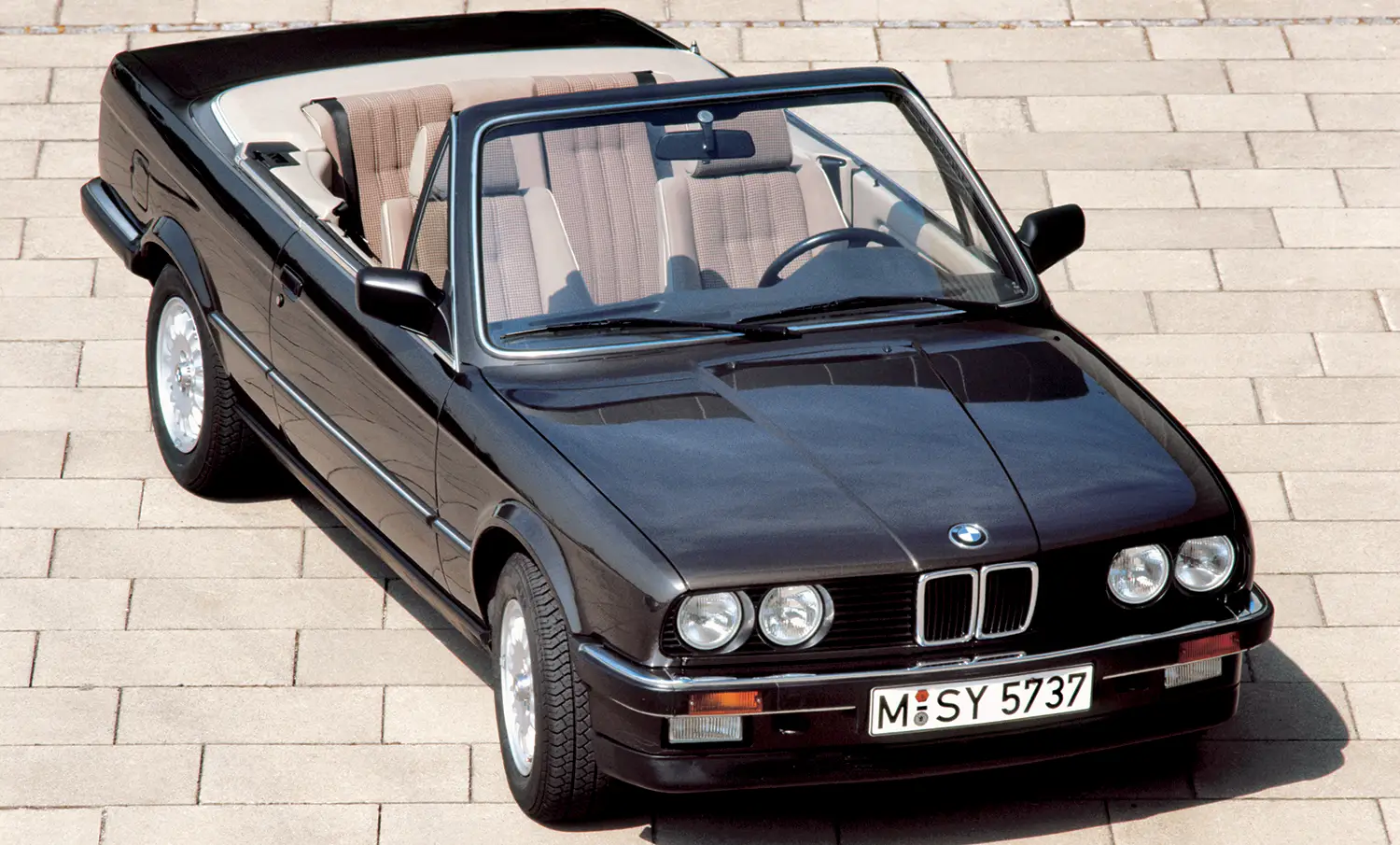
The E30 generation of the BMW 3 Series is arguably one of the most significant compact executive cars ever produced. When the 1986 BMW 325i Convertible arrived, it perfectly captured the optimism and style of the decade. It marked a crucial turning point for BMW, being the first full factory-built convertible in the 3 Series lineup. Before this model, open-top E30s were exclusively done by coachbuilders like Baur, using a Targa-style roof. Therefore, the new model represented a major statement of intent from the manufacturer.
The Factory Drop-Top E30 Development
BMW began producing the E30 in 1982 as a two-door sedan. Engineers knew that a true convertible version was vital for market appeal. This required significant structural modifications to maintain the E30’s acclaimed chassis rigidity. Consequently, the factory-built convertible, unveiled in 1985 and reaching major production by 1986, was a triumph of engineering. It successfully offered a completely pillarless, fully retractable soft-top experience.
Designing a True Open-Air Body
The conversion from a coupe shell to the factory convertible was far from simple. Removing the roof pillars meant reinforcing the A-pillars and the floor pan. Moreover, structural strengthening was added throughout the body shell to compensate for the lost rigidity. This careful design ensured the 1986 BMW 325i Convertible retained the sharp handling characteristics of its fixed-roof sibling. The result was a surprisingly solid and composed car, even with the top down.
The Heart of the 325i: The M20 Inline-Six
A key factor in the model’s success was the engine choice. BMW’s straight-six philosophy was applied beautifully to this chassis. Specifically, the M20 six-cylinder engine provided a distinct blend of smoothness and aural pleasure. Furthermore, the inline-six layout is inherently balanced, giving the car a refined character that rivals struggled to match. This engine ensured the convertible felt premium and sporty.

Stepping Up From the Eta to the ‘i’
The 325i variant succeeded the earlier, more efficiency-focused 325e or ‘eta’ model. The letter ‘i’ designated a higher-output, fuel-injected engine geared towards performance and higher-revving fun. Enthusiasts embraced this change, recognizing that the convertible body style deserved the more potent power unit. The M20B25 engine specification was the perfect partner for the open-air chassis.
Performance and Technical Specifications
The M20B25 engine in the non-catalytic converter European specification produced approximately 171 horsepower (126 kW). Its displacement measured 2,494 cc. The engine generated 226 Nm (167 lb-ft) of torque at 4,000 rpm. This power enabled the convertible to accelerate from 0 to 100 km/h in about 8.1 seconds when equipped with a five-speed manual gearbox. The top speed was listed near 216 km/h (134 mph), making it a genuinely quick car for its time. Front ventilated discs and rear solid disc brakes ensured adequate stopping power for the spirited performance.
Legacy and Collector Status Today
The E30 3 Series convertible, particularly the desirable 325i model, has become a genuine classic. Its clean, square-cut design remains a perfect representation of 1980s and early 1990s style. These models were built to be dependable, a trait that continues to appeal to modern buyers. The increasing scarcity of well-maintained examples has driven up its collectible value globally. Consequently, the 1986 BMW 325i Convertible is now highly sought after by collectors and enthusiasts alike. This model successfully blended the everyday usability of the 3 Series with the pure joy of open-top motoring, cementing its iconic status for future generations.
Disclaimer: Content on this site is for informational purposes only. Vehicle specs, pricing, and availability may change. Always verify details with official sources before making decisions. Opinions are those of the authors.
Source: BMW

